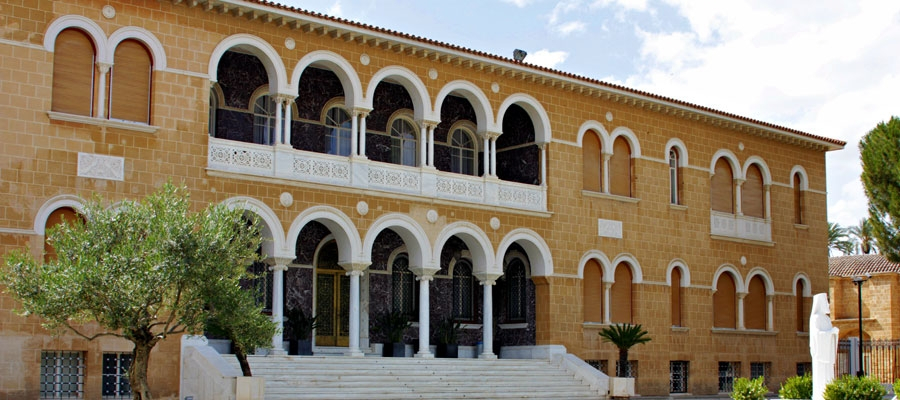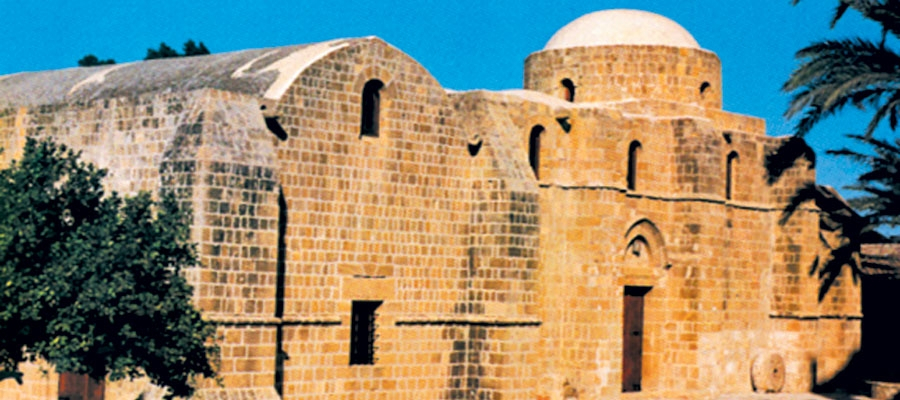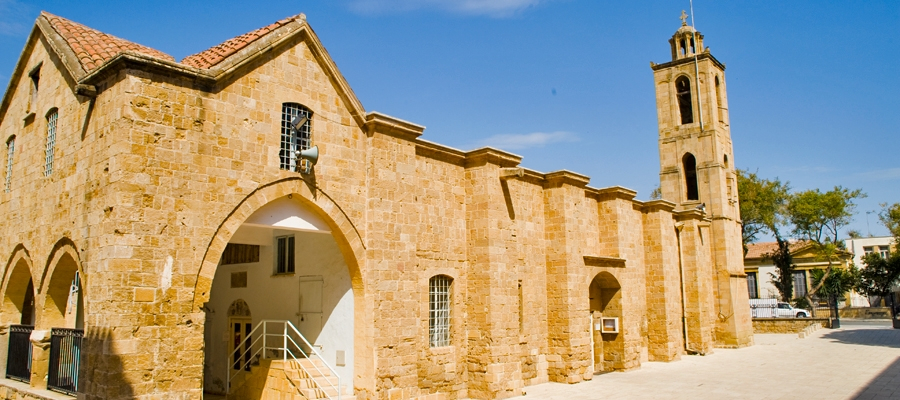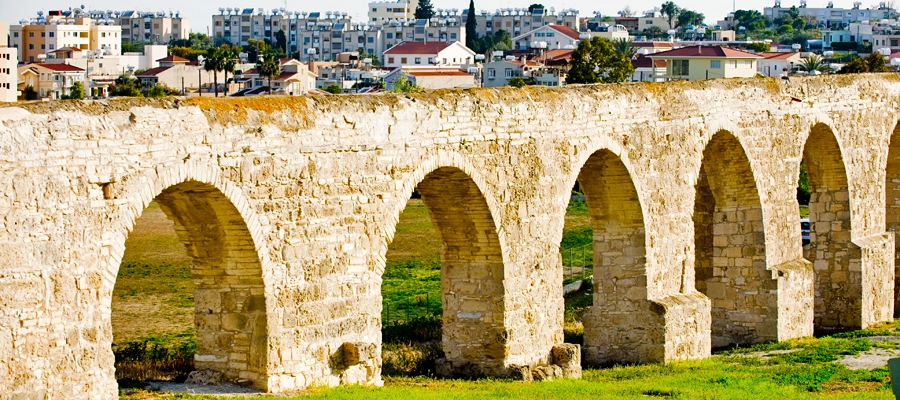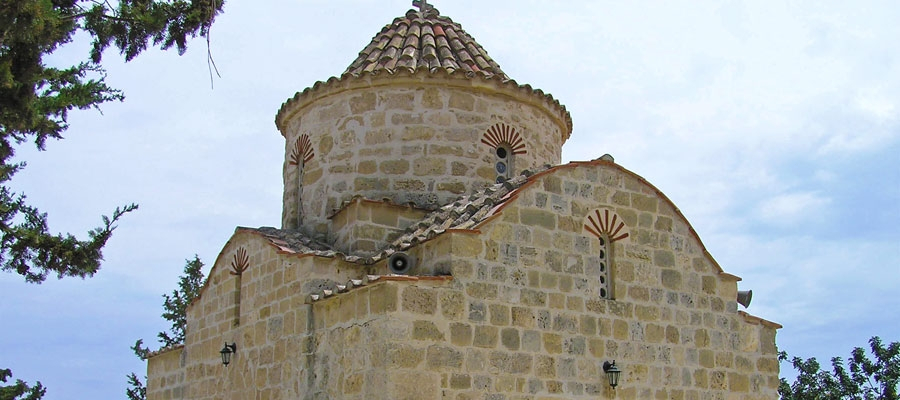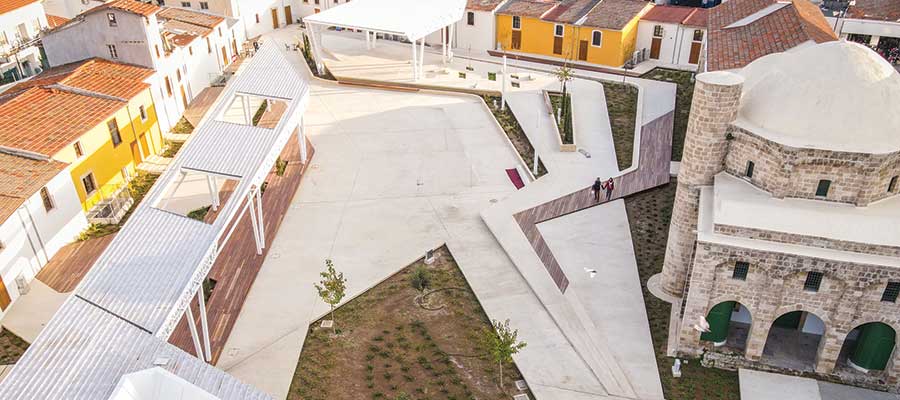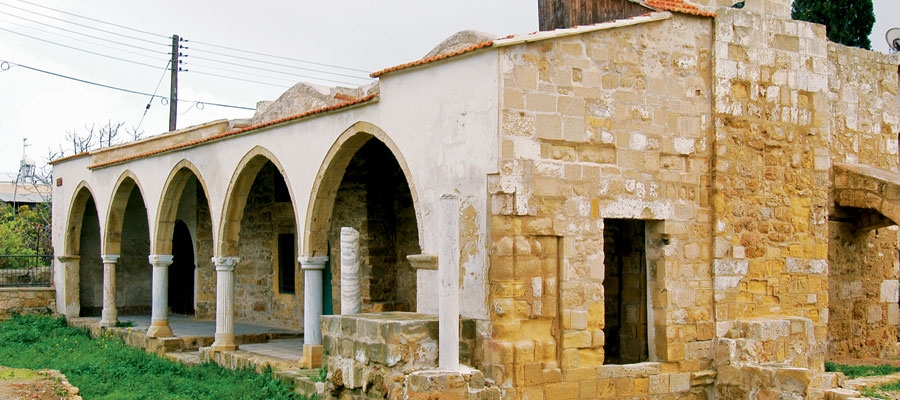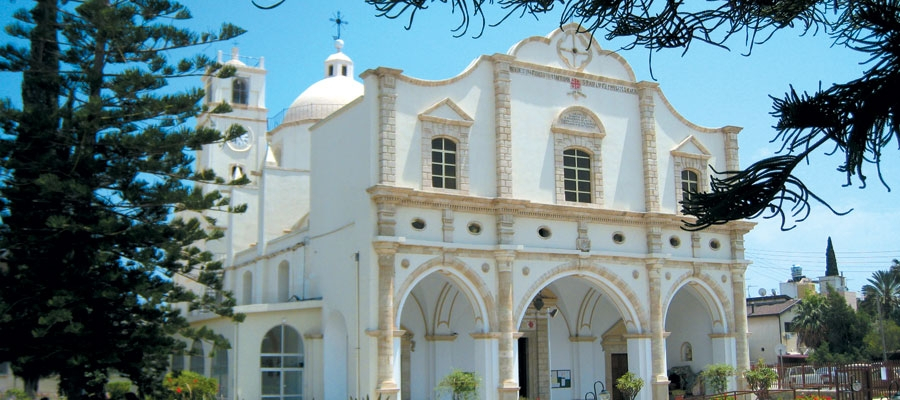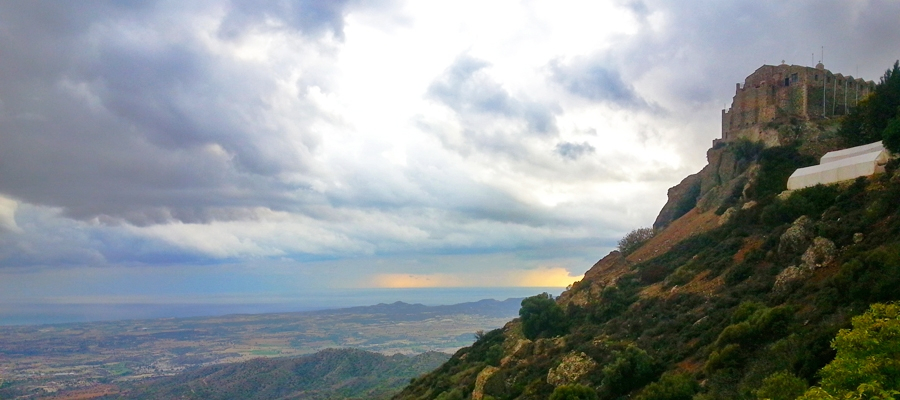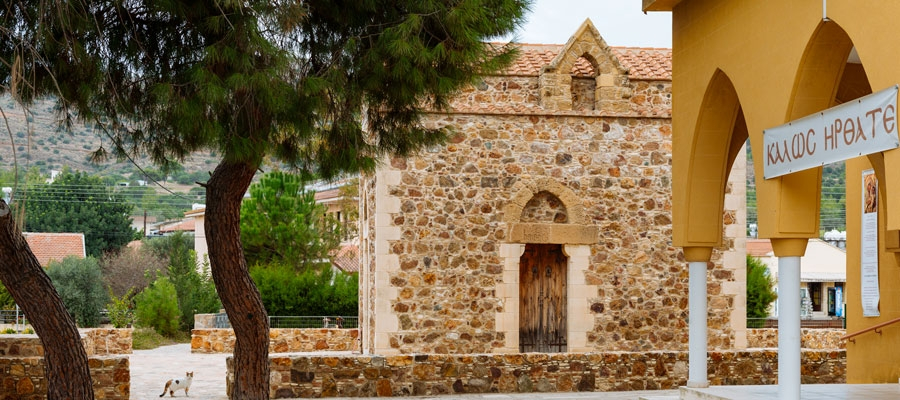Agios Ioannis, within the walled city of Lefkosia (Nicosia), is built on the site of the 14th century chapel of the Benedictine Abbey of Agios Ioannis, the Evangelist of Bibi.
Archbishop Nikiforos rebuilt the monastery chapel from its foundations in 1662. Dedicated to Agios Ioannis the Theologian, it remained a monastery until the 18th century when Archbishop Sylvester converted it into a cathedral, establishing it as the seat of the Orthodox Archbishopric in Cyprus.
The church is small, single-aisled and barrel vaulted, in the Franco-Byzantine style, with external buttresses and a west portico. In contrast to the deliberately modest exterior that was required by Ottoman rule, the gilded woodwork and bright interior illuminated by crystal chandeliers is particularly ornate. Covered in gold leaf, the woodcarving is in the best tradition of 18th century Cypriot craftsmanship, and it remains the only church in Lefkosia in which the whole of the internal Frescoes have survived in their entirety.
The four large icons on the iconostasis were painted by the Cretan master, Ioannis Kornaros in 1795 and 1797, and the 18th century wall paintings depict scenes from the Bible and the discovery of the tomb of Agios Varnavas (St. Barnabas) at Salamis.
|
Region: |
Lefkosia |
|
Address: |
Plateia Archiepiskopou Kyprianou, (next to the Archbishopric) |
|
Operating Hours: |
Monday – Friday: 08:00 – 12:00 / 14:00 – 16:00
Saturday: 09:00 – 12:00 (and during mass) |
|
Operating Period: |
All year round.
Closed on Public Holidays. |
|
Entrance Fee: |
Free |
|
|
Opening and closing times as well as entrance fees, are subject to alterations without notice. Visitors are advised to check before visiting. |

